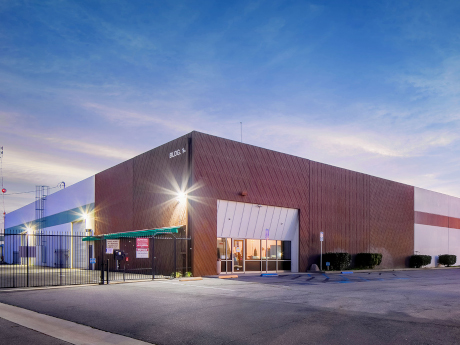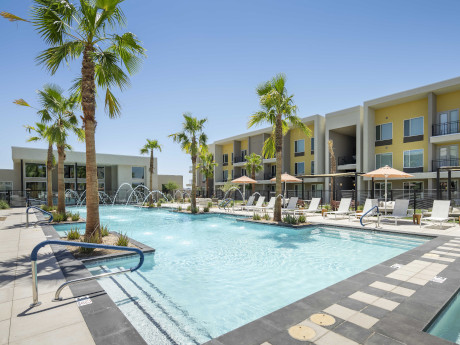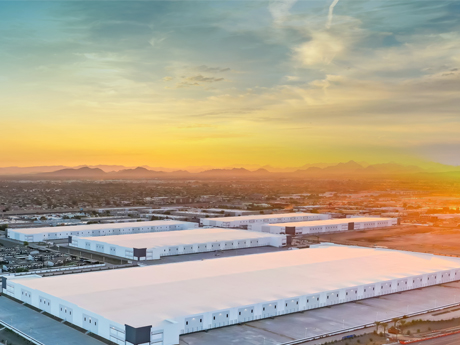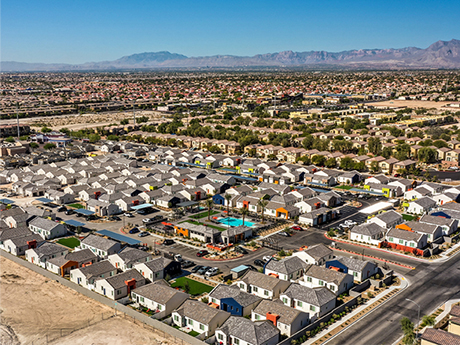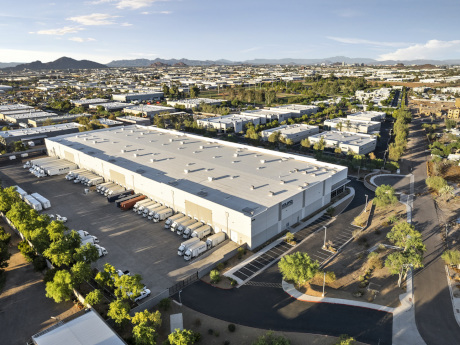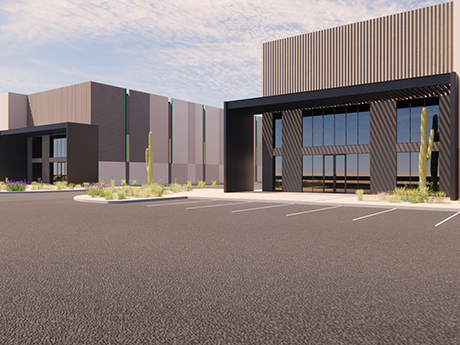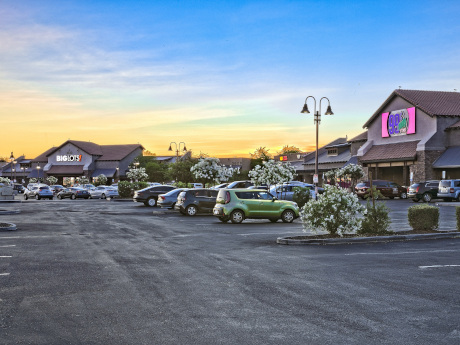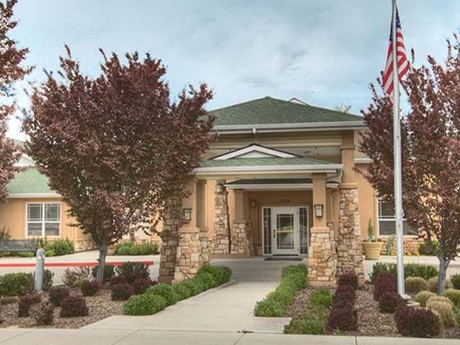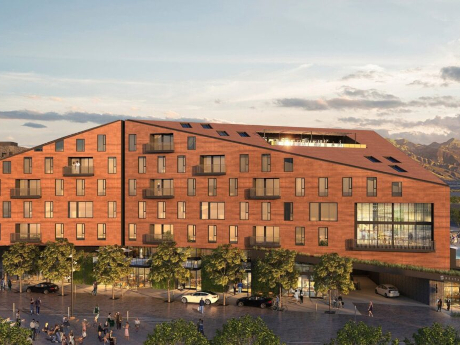— By Zach Middleton, senior associate, The Klabin Company/ CORFAC International — Last year brought significant change to the industrial sector across the country. Orange County was not immune to general market factors that were influenced by a sharp rise in interest rates, growing vacancy rates, shallowing tenant demand and increased supply. Fortunately, Orange County remains resilient heading into 2024 due to its prominent geography harbored by major distribution routes along the 5 and 91 freeways, as well as the county’s proximity to the ports. Orange County also proudly showcases one of Southern California’s most diverse tenant pools. This is spearheaded by key sectors like technology and innovation, research, healthcare and biotechnology, manufacturing and aerospace, consumer goods, ecommerce, wholesale and distribution, underscoring its economic versatility and potential for sustained growth. Market breakdown: vacancy rate uptick still below historical average Current vacancy rates across Orange County are as follows: • North County – 2.4% • West County – 4% • South County – 3.5% • Airport – 2.5% Vacancy rates have trended upward but remain below the historical average of 4 percent. A growing number of cheaper sublease options and the slight uptick in vacancy rates have influenced direct deal …
Western Market Reports
— By John Kobierowski, President/CEO, ABI Multifamily — Phoenix has experienced a surge in population due to its favorable climate, affordable cost of living and thriving job market. Since 2012, Phoenix has seen an average of 1.6 percent in population growth per year versus an annual U.S. average of 0.6 percent. The city’s allure is particularly strong among young professionals drawn to its continued job growth and retirees seeking sunny skies. This rising demand has translated into increased rental rates and occupancy levels over time, making the Phoenix market highly appealing to investors seeking stable and profitable ventures To meet the rising demand for multifamily housing, developers have ramped up construction activities in Phoenix. There are 40,459 new construction projects planned for 50-plus-unit construction. The market has also witnessed an escalation in the number of new projects — 28,841, according to Yardi). These include luxury apartments, mixed-use developments and affordable housing options. These projects not only cater to professionals, but target Millennials and members of Generation Z, who are increasingly gravitating toward rental properties. However, ABI Multifamily outlook sees a substantial drop-off in completions starting at the end of 2024 through 2025 as a result of increased pricing in materials, …
— By Brandon Banks, Managing Director, Midloch Investment Partners — A funny thing happened coming out of the COVID crisis. It’s not something I would have expected, but it makes sense. Perhaps it was just a question of when. For the first time since the Great Recession, some Western and Sun Belt markets have cooled to a point where value investors are seeing attractive investment opportunities in their midst. As is the case nationally, some of these deals are the result of higher interest rates and reduced proceeds pinching (if not punishing) over-leveraged sponsors that need to recapitalize their properties, but still the trend is apparent. I’m a native Westerner from the Sacramento area, and it’s almost by nature that we expect Western markets to grow faster than the nation as a whole. In fact, the West has seen largely nothing but high notes over the past 10 to 15 years. This includes consistently increasing asset values, low-priced capital, and supply and demand in relative balance, with a seemingly perpetual undersupply for some property types in many markets. Today, the West and Sun Belt still shine brightly…generally speaking. But even in these areas, the post-COVID cooling has been pronounced. Some properties …
— By Anthony Lydon, Executive Managing Director, JLL — At $403 billion in annual gross domestic product, Arizona is now the nation’s 18th largest GDP economy, recently passing Minnesota and Indiana. With its expected growth over the next 24 months, the state is on track to become the nation’s 16th largest GDP economy, surpassing Tennessee and Maryland. Like a shortlist of other fortunate U.S. markets, Arizona can credit a portion of this growth to its thriving logistics sector. The potential that industrial real estate offers for nearshoring — that commanding force with the power to rapidly diversify and expand a local economy. In Arizona alone, every $1 spent in the logistics industry has a $2 to $2.50 “multiplier effect” in the categories of earnings, revenue and jobs. The ability to capture that growth has been transformed in recent years by the CHIPS Act. This has provided, among other things, a 25 percent tax credit for investing in facilities that manufacture semiconductors or related manufacturing equipment. The Inflation Reduction Act has also provided more than $270 million in tax credits for clean energy projects involving solar, wind, hydrogen, carbon sequestration and EV charging. These programs played a role in attracting TSMC, …
— By Mike Ballard, Partner, Ascent Multifamily Accounting in Las Vegas — Las Vegas — known for its vibrant entertainment scene and thriving real estate market — is experiencing the early signs of a recession. With one of the most substantial construction forecasts in the nation, the Las Vegas multifamily real estate sector is poised to witness a surge in supply with 8,000 units to come online by 2025, according to Avison Young. However, despite the anticipated surge in deliveries, the Las Vegas market has seen fewer construction starts this year. We can anticipate that the Valley will once again have a shortage of rental housing in 2025 and 2026, which will increase rents and cause concessions to evaporate. It is also anticipated that up to 10 percent of commercial real estate within the Valley may face foreclosure in the next 18 months. The city is currently experiencing one of the highest rates of foreclosure in the country, with nearly one in every 1,800 homes experiencing foreclosure. This can be attributed to high interest rates and the prospect of a recession forming a dark cloud over the nation’s real estate market. According to CoStar, quarterly multifamily sales volume has yet to eclipse $150 million in 2023. The surge in supply is also …
— By Rob Martensen, Vice Chair, Colliers International — What’s hot in Phoenix’s industrial market? This is a question we get asked a lot from developers and property owners looking to enter our region. The topic of conversation is mostly centered around the amount of space under construction in the Phoenix MSA and what parts of town are seeing the most activity. In the past, we had submarkets that would be more or less attractive, and we would steer clients in that direction. Today, however, the entire Phoenix metropolitan area is in play for tenants and owners. Greater Phoenix has been fortunate to land several “whales,” large corporations that bring multiple suppliers with them. Naturally, the one most talked about is Taiwan Semiconductor Manufacturing Corporation (TSMC) in North Phoenix. TSMC took down nearly 1,600 acres of land to build a $12 billion chip making factory. The company has since announced it will immediately commence construction on Phase II of the project. Intel is another chip manufacturer that has had a presence in nearby Chandler, but is now under construction on a $20 billion expansion. Both of these undertakings will continue to feed companies that move to Phoenix and support not …
DIV Industrial has seen the demand, and is delivering for Fortune 100 tenants that need to be accommodated in the Phoenix market. The Irvine, Calif.-based investor and developer just closed on 47 acres in Goodyear that will soon serve as the home of Sarival Business Park, a 847,988-square-foot, Class A industrial complex. At completion, the modern, LEED-certified business park will include five free-standing buildings ranging from 135,000 square feet to 235,000 square feet. This transaction marks DIV’s first foray into the Phoenix market. Nicholas Ilagan, the firm’s co-founder and managing partner, notes there were many attributes that attracted him to this region. “The Phoenix MSA continues to be one of the fastest-growing metros in the country,” he says. “The region is propelled by its established infrastructure, business-friendly approach, educated workforce, and accessibility to Southern California’s port markets and the Western U.S. population. Phoenix is attracting large corporations and Fortune 500 companies that are relocating or setting up new, efficient operations, such as data centers, distribution facilities and manufacturing operations.” This includes Taiwan Semiconductor Manufacturing Company, which Ilagan notes has had a “huge boost to the local economy and stimulated employment growth.” Goodyear has also drawn in larger regional and national …
— By Dave Cheatham, President, Velocity Retail Group and X Team Retail Advisors — Phoenix’s retail market has rebounded post-pandemic and is now considered a winning bet, along with industrial and multifamily. The market has benefitted from surging consumer demand, population expansion and a robust technology industry, largely fueled by accelerated growth in the chip manufacturing sector. Strong and positive economic performance has established a foundation on which retailers have built success across the Valley of the Sun. There are challenges, to be sure, which range from interest rate hikes and rising inflation to chaos in the capital markets and reduced investment transaction volume, in addition to increased construction costs. New construction has been limited, as evidenced by the fact that no Target, Lowe’s or Home Depot stores have been built in the Valley since the recession. That appears to be changing as plans for big box stores that had been idle for a decade are shifting to expansion mode once more. Second-generation space is in high demand due to the higher costs of building new, standalone stores. Market indicators are trending upward for the retail sector. Vacancies are at a record low, demand remains high and rents are continuing …
— By Blake Bozett, founder and CEO, The Zett Group — The Boise metro (Boise, Eagle, Meridian, Garden City) is made up of 75 licensed assisted living facilities, 42 of which have more than 30 licensed beds. Of those 42 assisted living facilities, the ownership type is made up of: national owner/operator (18), local owner/operator (12), REIT (4), regional owner/operator (3), local development company (2), privately held real estate investment firm (1), 1031 investment platform (1) and non-profit (1). These ownership stats aren’t necessarily unique to other metros such as Seattle and Portland with institutional capital typically owning a large share of the buildings. What’s interesting to me on a micro level is that the single asset, one to two off owners are more interested in selling than years past. What started as a simple mom-and-pop operating business a few decades ago has turned into a sophisticated and challenging operating business with extreme expense, inflationary and regulatory pressures. Having come from the operations side of the business I’ve seen many of these challenges firsthand. Therefore, it no surprise why the local owner who has owned his/her assisted living facility for 20 years may have greater appetite for selling despite less …
— By Greg Swedelson and Jon-Eric Greene, co-founders, SSG Realty Partners — Although there continues to be much speculation and concern about the impacts of inflation, high debt costs, rising unemployment and an economy that may be heading for a slowdown in the coming year, there is reason to believe that the outlook for the Salt Lake City commercial real estate market is quite positive. With more than $100 billion in annual GDP, Salt Lake City’s economic growth rate is poised to end the year up nearly 3.5 percent (and nearly 80 percent since 2011). Although many are projecting a more moderate growth rate of 2.8 percent entering 2024, the overall economy and commercial real estate market in SLC remain resilient, if not robust. Offering a combination of affordability, abundant job opportunities and a business-friendly environment, SLC has attracted some of the nation’s largest corporations and specialized tech companies, and with them, talent to fuel meaningful employment growth. So much so, in fact, that net employment is up nearly 10 percent over the pre-Covid levels of 2019, with no sign of slowing. Like so many markets, SLC has seen a precipitous drop in investment sales volume across all commercial sectors …


